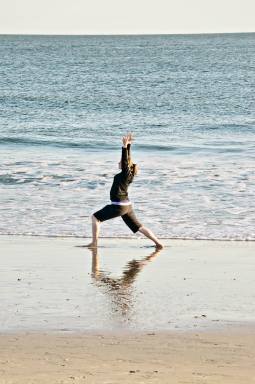In the Bhagavad Gita, Krishna describes the four paths of yoga:
- Karma Yoga: the path of action
- Raja Yoga: the path of meditation
- Jnana Yoga: the path of wisdom/knowledge
- Bhakti Yoga: the path of love/devotion
Each of these paths has the potential to lead a yogi to enlightenment, so you choose your path based on your temperament and personality. Choosing the wrong path will make it much more difficult to make progress, because essentially you’re fighting your nature. This month, my assignment is to consider the four paths and decide which one appeals to me the most.
Today I’ll talk about Raja Yoga, the path of meditation. Also know as “the royal path”, this is the path described in the Yoga Sutras and by Swami Rama in his book The Royal Path. Raja yoga is often called the eightfold path, since it is comprised of eight steps:
- yamas: moral restraints
- niyamas: moral practices
- asana: posture
- pranayama: control of the breath
- pratyahara: withdrawal and control of the senses
- dharana: concentration
- dhyana: meditation
- samadhi: enlightenment
We’ve already talked about most of these steps here on this blog, and most of them will appear in all four of the yoga paths at some point – for example, no matter what path you’re following, you’re going to do some yoga postures and you’re going to meditate. The difference is that someone drawn to Raja yoga will make meditation her main spiritual practice and the focus of her efforts. A Raja yogi is someone who would really enjoy a weeklong meditation retreat: eating meals in silence, getting up early to spend hours meditating. You can learn more about Raja yoga in chapter 6 of the Bhagavad Gita.
Although I’ve really been enjoying my meditation practice, and I’m glad to be devoting time to it every day, I don’t think that Raja yoga is my path. I’m getting better at calming my mind, but such a quiet, still practice I don’t think would be ideal for me spiritually. However, I’m really looking forward to spending more time exploring meditation as a part of whatever path I choose.



